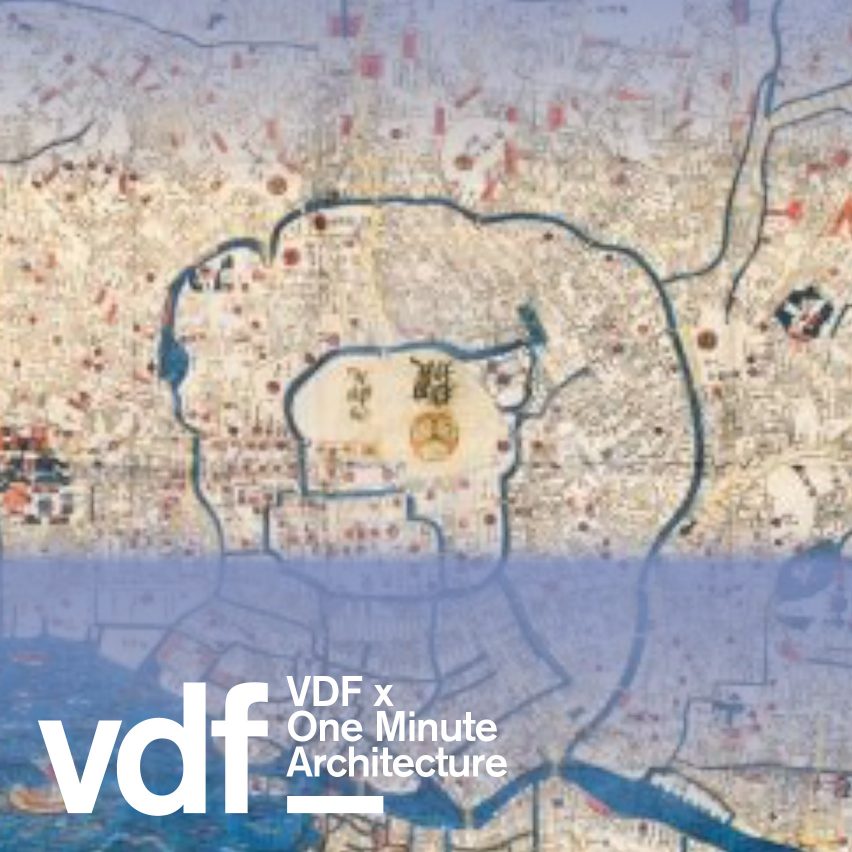"Tokyo has turned its back on its rivers" says Martin van der Linden
In his latest contribution to Virtual Design Festival, architecture video blogger Martin van der Linden reveals some of Tokyo's "invisible" waterways, which flow beneath the city's roads and pavements. "As many as 2,500 people cross each time the light turns green," van der Linden says in the video, while standing at Tokyo's busy Shibuya Crossing. The post "Tokyo has turned its back on its rivers" says Martin van der Linden appeared first on Dezeen.


In his latest contribution to Virtual Design Festival, architecture video blogger Martin van der Linden reveals some of Tokyo's "invisible" waterways, which flow beneath the city's roads and pavements.
"As many as 2,500 people cross each time the light turns green," van der Linden says in the video, while standing at Tokyo's busy Shibuya Crossing. "Few people know that right under here, the Uda and Shibuya rivers converge."
"The image of Tokyo as a city of water has long been forgotten"
Over 100 rivers, streams and canals run through Tokyo, but most of them have been built over or filled in over the past 60 years.
In Shibuya, the rivers were covered up as part of a major redevelopment of the area in the run-up to the 1964 Summer Olympics, which the city hosted.
"Tokyo has turned its back on its rivers and waterways," van der Linden says. "The image of Tokyo as a city of water has long been forgotten."
"Not only have the rivers been used as a base for roads in the years leading to the 1964 Olympics," he continues. "Many small rivers and streams have been filled in."
Shibuya redevelopment has revealed the river again
The Shibuya district has since been redeveloped again, this time for the Tokyo 2020 Olympic Games, which were due to take place this summer until the event was postponed until 2021 due to the coronavirus pandemic.
As part of the redevelopment, a significant stretch of the river has been opened up again.
"Shibuya's being redeveloped right now and it will be the first time in 60 years that the river will become part of the urban landscape again," van der Linden says in the video, which was filmed in 2016 when the redevelopment was still underway.
"Look carefully and listen"
Despite the vast majority of Tokyo's waterways remaining hidden, evidence of their existence can still be found if you know where to look, according to van der Linden.
"Rivers become invisible until you look for the signs that there used to be a river under the street," he adds, pointing out drain covers in a number of locations.
"So the next time you are walking on the street in Tokyo, look carefully and listen," he concludes. "You might be walking on top of a river."
Virtual Design Festival has teamed up with van der Linden to present a selection of his best short architecture movies.
"Even after 28 years, I found Tokyo endlessly fascinating, and I enjoy making videos of its architecture, and its rather mysterious urbanity," he says in a specially created video introducing the collaboration.
About Virtual Design Festival
Virtual Design Festival, the world's first digital design festival, runs from 15 April to 30 June 2020. It is a platform that will bring the architecture and design world together to celebrate the culture and commerce of our industry, and explore how it can adapt and respond to extraordinary circumstances.
VDF will host a rolling programme of online talks, lectures, movies, product launches and more, complementing and supporting fairs and festivals around the world that have had to be postponed or cancelled and it will provide a platform for design businesses, so they can, in turn, support their supply chains.
Find out more here or email vdf@dezeen.com for details or to join our mailing list.
The post "Tokyo has turned its back on its rivers" says Martin van der Linden appeared first on Dezeen.
